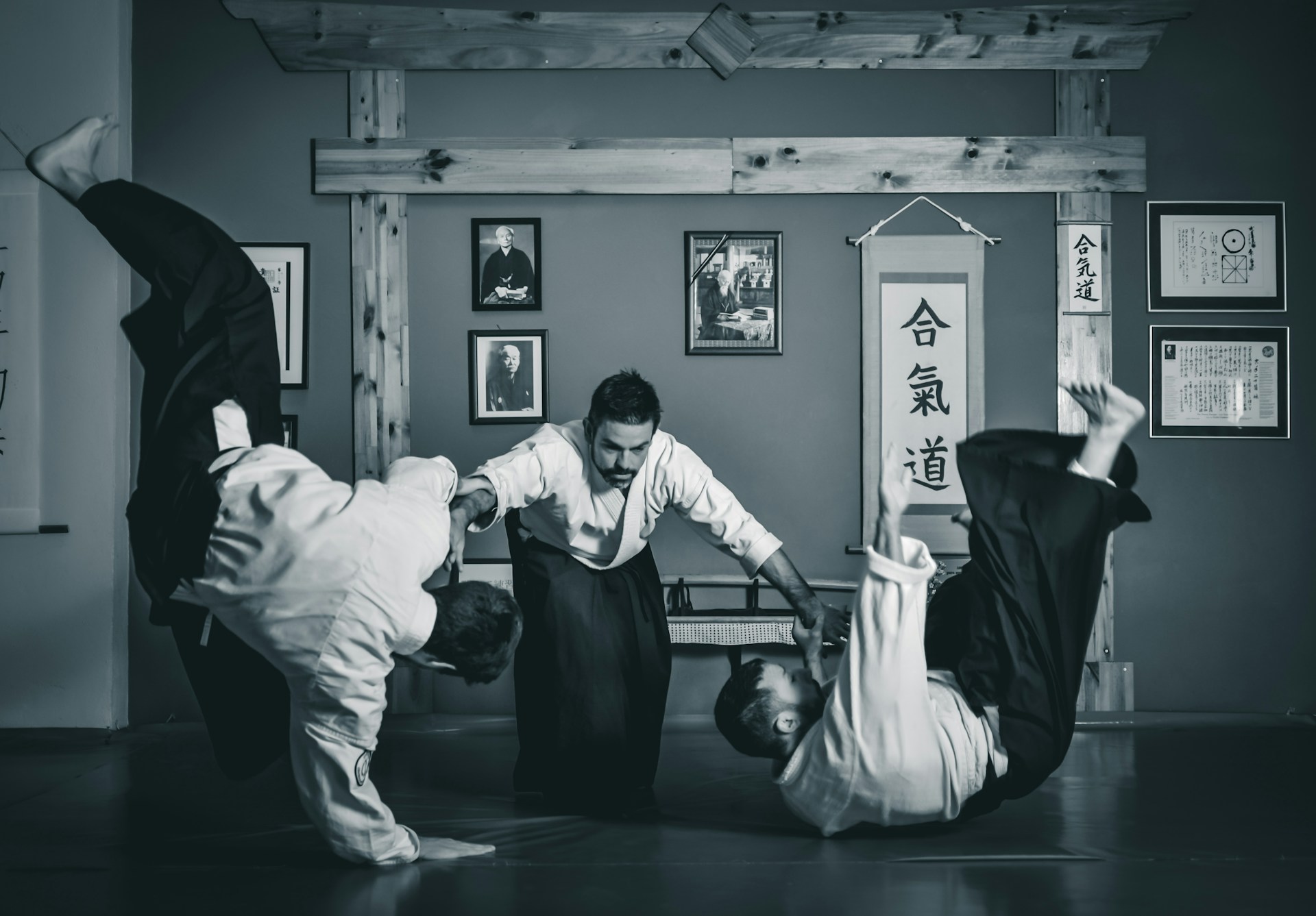Photo by Nando García on Unsplash
In the fast-paced, high-stakes world of competitive gaming, players are constantly seeking an edge. They upgrade their hardware, memorize complex strategies, and drill mechanical skills for hours. But what if the next level of play isn’t found in a faster refresh rate or a new mouse, but in the ancient wisdom of a martial art? The principles of Aikido, a Japanese martial art focused on blending with an opponent’s motion, offer a profound framework for elevating your gaming prowess, transforming frantic button-mashing into a dance of digital precision.
This article explores how the core tenets of Aikido can be translated to the virtual battlefield, helping you cultivate a calmer, more adaptable, and ultimately more successful gaming mindset.
Blending with the Meta: The Principle of Aiki
At the heart of Aikido is Aiki, the principle of blending with an opponent’s energy and momentum. In a physical confrontation, this means not meeting force with force, but rather redirecting an attacker’s forward momentum to unbalance and control them. In gaming, this translates to understanding and flowing with the current “meta” – the dominant strategies and tactics in a given game.
Instead of stubbornly clinging to a favorite but underpowered character or strategy, an “Aiki-gamer” studies the meta to understand its strengths and weaknesses. They learn the popular attack patterns, the common defensive maneuvers, and the predictable rhythms of their opponents. By blending with this flow of the game, they can anticipate enemy actions, identify openings, and turn the opponent’s aggressive tendencies against them. In a fighting game, this could mean baiting a notoriously powerful special move and then punishing the recovery frames. In a strategy game, it might involve appearing to fall into a common rush tactic, only to have a perfectly designed counter-attack waiting.
The Unmovable Mind: Centering in the Chaos
A fundamental practice in Aikido is the development of a stable and centered mind and body. This “unmovable mind” allows a practitioner to remain calm and focused, even in the heat of a chaotic exchange. In the world of esports, where tilt and frustration can quickly unravel a player’s performance, this principle is invaluable.
The centered gamer doesn’t let a lost round or a surprise gank rattle their composure. They maintain a steady emotional state, allowing for clear-headed decision-making under pressure. This mental fortitude is built through conscious practice. Techniques such as deep breathing between matches, focusing on the present moment rather than past mistakes, and cultivating a mindset of continuous learning rather than a desperate need to win can all contribute to a more centered and resilient in-game presence.
Mastering the Space: Maai and Positioning
Maai is the Japanese martial arts concept of the space or distance between you and your opponent. It’s a dynamic and critical element of any engagement. In Aikido, controlling the maai is essential for dictating the flow of an encounter. This principle has a direct and powerful application in virtually every gaming genre.
In a first-person shooter, maai is your positioning relative to cover, your teammates, and the enemy. A player who understands maai knows the effective range of their weapons and their opponent’s, and they constantly adjust their position to maintain an advantage. In a MOBA (Multiplayer Online Battle Arena), it’s the subtle dance of last-hitting minions while staying out of the enemy’s harassment range. Even in a digital card game, maai can be seen in the timing of playing certain cards to control the “board presence” and limit the opponent’s options.
The Beauty of Timing: Irimi and Tenkan
Aikido techniques often rely on precise timing and fluid movement. Irimi is the act of entering directly into an opponent’s attack, while Tenkan is a turning or pivoting motion to redirect force. Together, they represent a sophisticated understanding of when to engage and when to reposition.
In gaming, this translates to the concepts of “pushing the advantage” and “strategic retreat.” A player practicing irimi knows the exact moment to press an attack when an opponent has overextended or used a crucial cooldown. Conversely, a player skilled in tenkan recognizes when a fight is unwinnable and has the discipline to disengage, preserving their resources and looking for a more favorable engagement later. This is the difference between a reckless player who feeds the enemy team and a strategic player who knows how to pick their battles.
Beyond the Win: The Dojo of the Mind
Ultimately, applying the fundamentals of Aikido to gaming is about more than just winning matches. It’s about transforming your approach to the game itself. It encourages a more thoughtful, less reactive playstyle. It fosters a respect for the “dance” of competition and a desire for self-improvement over mere victory.
By embracing these principles, you may find that you not only climb the ranks but also enjoy the journey more. The frustration of a loss can be replaced by the satisfaction of a well-executed maneuver. The anxiety of a high-pressure situation can be supplanted by the calm focus of a centered mind. The digital arena can become your dojo, a place not just for competition, but for personal growth.
In my next articles, I will delve deeper into this philosophy, focusing on separate Aikido fundamentals. Each piece will explore a single concept in greater detail and offer specific, actionable ways to apply it to your favorite games.
